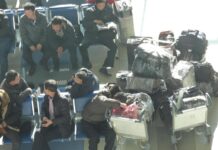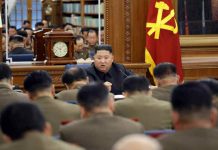
Despite moves by the North Korean government to implement the ambitious “20×10 regional development policy,” factory officials are trying to avoid being pulled into efforts to achieve goals set out by the new policy.
Speaking on condition of anonymity for security reasons, a Daily NK source in South Pyongan Province said the regional industry management office of the provincial people’s committeeNorth Korean people's committees are akin to local governmen... More has been selecting factories to implement the 20×10 regional development policy on a pilot basis.
North Korean leader Kim Jong Un unveiled the 20×10 regional development policy in a policy speech before the 10th Plenary Session of the 14th Supreme People’s Assembly on Jan. 15. He called for the construction of modern regional industrial factories in 20 counties each year, “thus raising the basic material and cultural living standards of the people in all cities and counties in one step” within 10 years.
At the subsequent 19th Expanded Meeting of the Political Bureau of the Eighth Central Committee, Kim said that the failure to provide provincial residents with necessities such as basic food and consumer goods was a serious political problem that the ruling party and government could not ignore.
With Kim personally unveiling and aggressively promoting his regional development policy, officials in the regional industry management bureaus of the provincial people’s committees – which are directly affected by the policy – have begun searching for factories that can produce quick and accurate results and selecting them to implement the policy on a trial basis.
However, factory officials are visiting regional industry management bureau officials to ask them to exclude their workplaces from the trials.
The officials of the regional industry management bureaus, who must quickly implement Kim’s policy, are thus in a difficult position. Although they try to convince the factory officials that factories in 20 counties need to be modernized each year, the factory officials still ask that their factories be excluded.
If factories are selected for the pilot program, they must produce tangible results under the close supervision and control of the government. As a result, many regional factory officials are trying to avoid having their factories selected as trial subjects.
“The factories also feel a heavy burden of having to provide all the money, technology, and manpower on their own to meet the goals and targets unilaterally set from above,” he said.
Questionable policy
Meanwhile, some South Korean experts believe the 20×10 regional development policy is unlikely to produce results due to North Korea’s lack of production facilities and raw materials.
In a recent report on North Korea’s 20×10 regional development policy, Choi Ji Young, a researcher at the Korea Institute for National Unification (KINU), wrote that the country has greatly expanded its budget spending on agriculture and rural development in 2022-2023 and is maintaining that level of spending in 2024, “but it has not noticeably expanded its budget spending on the development of regional industries.”
Choi wrote: “With the recent expanded meeting of the Central Committee’s Politburo deciding to mobilize military units for the struggle to continue the regional industrial revolution, the authorities seem to be trying to implement the 20×10 regional development policy with North Korean-style mass mobilization; however, there are limits to restoring production and increasing operation rates simply by increasing manpower.”
Translated by David Black. Edited by Robert Lauler.
Please send any comments or questions about this article to dailynkenglish@uni-media.net.


















